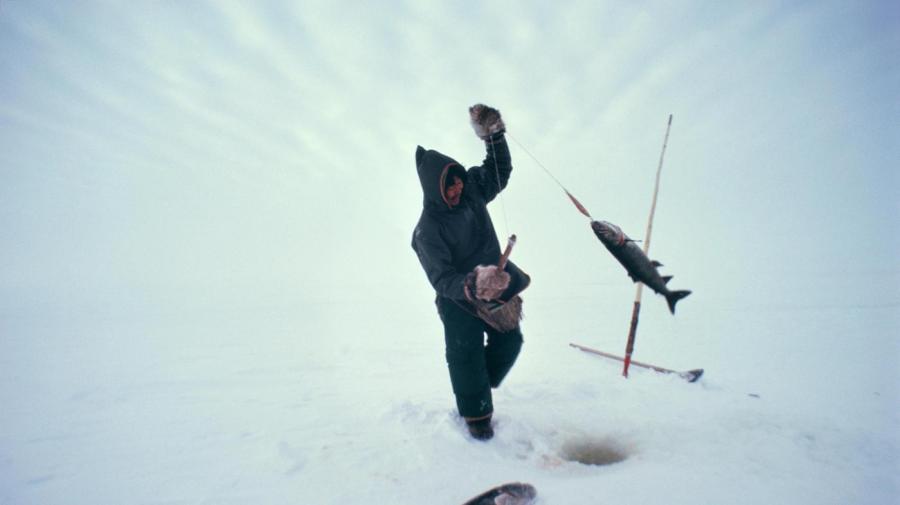What Do Eskimos Eat?

The traditional Eskimo diet varies with the seasons. During the winter months, seals, whales and other sea mammals are hunted. The meat is eaten cooked, raw or dried. In summer and fall months, the major food sources are caribou, small game, fish and berries.
The diet of an Inuit, Yupik or other northern native is conditioned by geographic location and degree of urbanization, explains Discover Magazine. People living in Western-style towns and cities tend to eat a Western-style diet. Nomads who live more traditionally eat caribou meat and sometimes the partially digested moss and lichens from the caribou’s gut. Coastal populations have diets high in fish, seal, walrus and whale. Meat and blubber form the staple food from these sources though wild blueberries and salmonberries can be picked and eaten during the short spring.
A traditional Eskimo delicacy is akutok, often called Eskimo ice cream. This is made from arctic berries, seal oil and caribou meat. Strong hot tea and hard biscuits, made with flour bought from a trading post, are served in nearly every home.
Eskimo is the name given to a group of people living in Alaska, northern Canada, Greenland and the Chukchi Peninsula of northeastern Siberia. The name was long thought to have come from an Algonquian Indian word meaning eaters of raw meat. However, it is now believed to have originated with the Montagnais Indians, a northern Canadian tribe, and may mean snowshoe-netter.
Eskimos possess a unique culture in a cold, harsh environment. They belong to the Mongoloid racial group. Eskimo language, part of the Eskimo-Aleut language family, consists of two branches: Yupik and Inuit. Yupik is spoken in Siberia and southwestern Alaska, and Inuit is spoken in northern Alaska, Canada and Greenland. The Inuit language has several dialects and is called Inupiaq in Alaska, Inuktitut in Canada and Kalaallisut in Greenland. In addition to their own language, many Eskimos read, write and speak English (in North America), Danish (in Greenland) and Russian (in Siberia).





